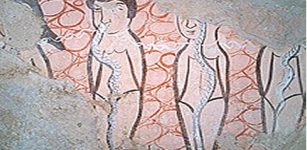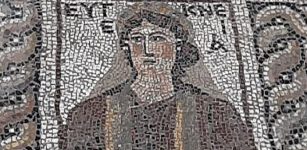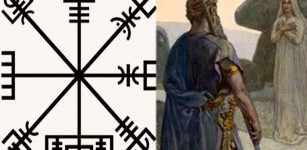What Is The Codex Mendoza?
AncientPages.com - Question: What Is The Codex Mendoza?
Answer: The sixteenth-century Codex Mendoza in three parts, is an extraordinary document, for aesthetic, formal, and historical reasons.
It’s among several codices, used by the secular authorities to make a summary of life under the Aztec empire for the use of the first viceroy of New Spain, Antonio de Mendoza.
The Codex Mendoza (begun in 1541) recorded information about the Aztec empire, the lords of Tenochtitlan, all Aztec rulers and their conquests, an account of life “from year to year” and the tribute paid to the Aztecs. It also included glyphic or symbolic visual codes, a summary of cultural ranks and behavior expected from men and women at different stages of life; and a list of monthly religious observances.
See also: Codex Washingtonianus Contains A Passage Not Seen In Any Other Biblical Manuscript
The images in the document were often annotated in Spanish by a priest that spoke Nahuatl, the language spoken by the Nahuas (the ethnic group to whom the Aztecs belonged).
Viceroy Mendoza intended to send the Codex to the Spanish King, Emperor Charles V of Spain, but it never reached Spain. French pirates acquired the Codex and it ended up in France.
The document is a key source for our understanding of Aztec culture and society, and it is also important because so few codices survived the conquest.
The Codex Mendoza was painted on European paper and bound in European style, unlike the indigenous pre-Columbian books of Mexico, which were painted on bark paper or deer skin and folded like a screen.
The document is considered by many as the first Latin American testimony (‘ testimonio’).
AncientPages.com
More From Ancient Pages
-
 On This Day In History: Battle of Salamis Was Fought – On Sep 22, 480 BC
News | Sep 22, 2016
On This Day In History: Battle of Salamis Was Fought – On Sep 22, 480 BC
News | Sep 22, 2016 -
 The First Conservationists May Have Been Early Pacific Islanders Who Started The Practice 3,000 Years Ago
Archaeology | Sep 29, 2021
The First Conservationists May Have Been Early Pacific Islanders Who Started The Practice 3,000 Years Ago
Archaeology | Sep 29, 2021 -
 Oral Stories Of Australia’s First Nations Might Be 10,000 Years Old – Evidence Found
Archaeology | Aug 2, 2023
Oral Stories Of Australia’s First Nations Might Be 10,000 Years Old – Evidence Found
Archaeology | Aug 2, 2023 -
 Oxford University Is Older Than The Aztec Empire – Historical Records Say
Ancient History Facts | Dec 5, 2017
Oxford University Is Older Than The Aztec Empire – Historical Records Say
Ancient History Facts | Dec 5, 2017 -
 ‘Curious’ Creature With No Anus Is Not Earliest Human Ancestor – Relieved Scientists Discover
Archaeology | Aug 18, 2022
‘Curious’ Creature With No Anus Is Not Earliest Human Ancestor – Relieved Scientists Discover
Archaeology | Aug 18, 2022 -
 DNA In Viking Poop Sheds New Light On 55,000-Year-Old Relationship Between Gut Companions
Archaeology | Sep 5, 2022
DNA In Viking Poop Sheds New Light On 55,000-Year-Old Relationship Between Gut Companions
Archaeology | Sep 5, 2022 -
 History Shows: Taxes And Bureaucracy Are Cornerstones Of Democracy
Archaeology | Feb 18, 2021
History Shows: Taxes And Bureaucracy Are Cornerstones Of Democracy
Archaeology | Feb 18, 2021 -
 Steel Was Already Being Used In Europe 2,900 Years Ago – New Study
Archaeology | Mar 1, 2023
Steel Was Already Being Used In Europe 2,900 Years Ago – New Study
Archaeology | Mar 1, 2023 -
 Unexplained Historical Sighting And Archaeological Discovery Reported In Alberta By Police Officer
Featured Stories | Jul 1, 2024
Unexplained Historical Sighting And Archaeological Discovery Reported In Alberta By Police Officer
Featured Stories | Jul 1, 2024 -
 Mysterious Judaculla Rock And The Slant-Eyed Giant Of The Cherokee
Featured Stories | May 8, 2021
Mysterious Judaculla Rock And The Slant-Eyed Giant Of The Cherokee
Featured Stories | May 8, 2021 -
 Ancient Underwater ‘Lion City’ Rests Beneath The Thousand Island Lake
News | Feb 11, 2014
Ancient Underwater ‘Lion City’ Rests Beneath The Thousand Island Lake
News | Feb 11, 2014 -
 LIDAR Discovery Of Valley Of Lost Cities In The Amazon
Featured Stories | Aug 16, 2024
LIDAR Discovery Of Valley Of Lost Cities In The Amazon
Featured Stories | Aug 16, 2024 -
 Cave Of The Stone Sepulcher – ‘Actun Tunichil Muknal’ And Its Dark History
Featured Stories | Mar 22, 2019
Cave Of The Stone Sepulcher – ‘Actun Tunichil Muknal’ And Its Dark History
Featured Stories | Mar 22, 2019 -
 Ancient Monastery In The Middle Of ‘Syria’s Stonehenge’ – Underground Caves, Tombs, Stone Circles Older Than Pyramids
Civilizations | Nov 13, 2015
Ancient Monastery In The Middle Of ‘Syria’s Stonehenge’ – Underground Caves, Tombs, Stone Circles Older Than Pyramids
Civilizations | Nov 13, 2015 -
 Ancient “Mona Lisa Mosaic Of Kadirli” – Discovered
Archaeology | Nov 16, 2020
Ancient “Mona Lisa Mosaic Of Kadirli” – Discovered
Archaeology | Nov 16, 2020 -
 Mystery Of The 2,000-Year-Old Grave On The Isles Of Scilly Solved!
Archaeology | Jul 28, 2023
Mystery Of The 2,000-Year-Old Grave On The Isles Of Scilly Solved!
Archaeology | Jul 28, 2023 -
 In Search Of The Mysterious Fountain Of Youth
Featured Stories | Apr 27, 2015
In Search Of The Mysterious Fountain Of Youth
Featured Stories | Apr 27, 2015 -
 Vegvisir – Old, Sacred Norse Symbol Of Protection And Guidance
Ancient Symbols | May 23, 2020
Vegvisir – Old, Sacred Norse Symbol Of Protection And Guidance
Ancient Symbols | May 23, 2020 -
 12 Ancient Myths, Legends And Biblical Stories Confirmed By Modern Science
Featured Stories | Apr 22, 2017
12 Ancient Myths, Legends And Biblical Stories Confirmed By Modern Science
Featured Stories | Apr 22, 2017 -
 Viking Sword Unearthed In Grave Excavated by Archaeologists In Central Norway
Archaeology | Aug 27, 2020
Viking Sword Unearthed In Grave Excavated by Archaeologists In Central Norway
Archaeology | Aug 27, 2020

